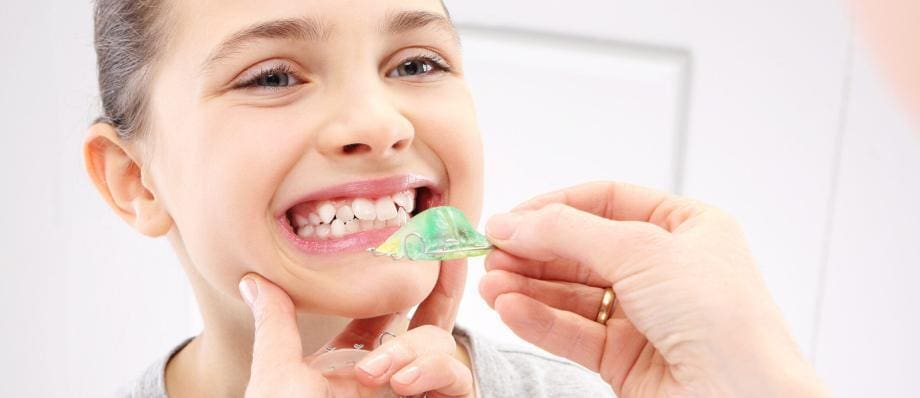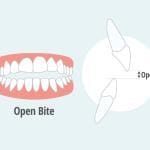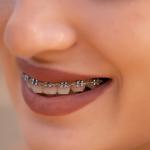Malocclusion, commonly known as a “bad bite,” is a dental condition that affects the alignment and positioning of the teeth and jaws. This misalignment can result in various issues, including difficulty chewing, speech problems, and even affect one’s facial appearance. In this article, we will delve into the causes, types, symptoms, diagnosis, and treatment options for malocclusion, shedding light on this prevalent dental concern.
What is Malocclusion?
Malocclusion refers to any misalignment of teeth or incorrect occlusion or relation between the teeth of the two dental arches. The severity of malocclusion can range from minor alignment issues to more severe cases that require orthodontic treatment.
Causes of Malocclusion
Malocclusion can be caused by a combination of genetic and environmental factors. These factors can include:
- Genetics
- Childhood habits
- Premature loss of baby teeth
- Oral trauma
- Tumors or cysts
- Inadequate dental care
Genetics
Hereditary factors play a significant role in the development of malocclusion. If a person’s parents had misaligned teeth or jaws, there is a higher chance of the offspring experiencing similar dental issues.
Childhood habits
Certain childhood habits, such as prolonged thumb-sucking, pacifier use, or extended use of a bottle, can impact the development of the teeth and jaws, leading to malocclusion.
Premature loss of baby teeth
Losing baby teeth earlier than usual, either due to trauma or decay, can affect the alignment of permanent teeth, resulting in malocclusion.
Oral trauma
Injuries to the jaw or face can disrupt the alignment of teeth and jaws, causing malocclusion.
Tumors or cysts
Abnormal growths in the jawbone can interfere with the proper alignment of teeth and lead to malocclusion.
Inadequate dental care
Poor dental hygiene, inadequate dental care, or untreated cavities can contribute to malocclusion.
Types of Malocclusion
Malocclusion can manifest in various forms, each with its own specific characteristics. The common types of malocclusion include:
- Class I Malocclusion
- Class II Malocclusion
- Class III Malocclusion
- Open Bite
- Crossbite
- Crowding
- Spacing
Class I Malocclusion
This is the most common type, where the upper teeth slightly overlap the lower teeth, but the bite is still relatively normal.
Class II Malocclusion
Also known as an overbite, in this type, the upper jaw and teeth significantly overlap the lower jaw and teeth, creating a noticeable protrusion.
Class III Malocclusion
Referred to as an underbite, this type occurs when the lower teeth and jaw protrude forward, overlapping the upper teeth and jaw.
Open Bite
An open bite occurs when some teeth do not make contact with the opposing teeth when the mouth is closed, leaving a visible gap between the upper and lower teeth.
Crossbite
A crossbite happens when some upper teeth sit inside the lower teeth, causing a misalignment of the dental arches.
Crowding
Crowding is characterized by insufficient space in the dental arch for all the teeth to fit properly, resulting in overlapping or crooked teeth.
Spacing
This type involves excessive space between teeth due to missing teeth, small teeth, or a combination of both.
Symptoms of Malocclusion
Malocclusion can present a variety of symptoms, including:
- Difficulty chewing or biting
- Speech difficulties
- Facial asymmetry
- Jaw pain and discomfort
- Tooth wear and damage
Difficulty chewing or biting
Misaligned teeth can make it challenging to chew food properly, leading to digestive issues and malnutrition.
Speech difficulties
Malocclusion can affect speech patterns, causing issues with pronouncing certain sounds or words.
Facial asymmetry
Severe malocclusion can affect the shape and symmetry of the face, impacting one’s overall appearance.
Jaw pain and discomfort
Misalignment can strain the jaw muscles, leading to pain, jaw clenching, or temporomandibular joint (TMJ) disorders.
Tooth wear and damage
Uneven tooth alignment can cause accelerated wear on specific teeth, leading to dental problems like tooth decay and fractures.
Diagnosis of Malocclusion
Diagnosing malocclusion involves a comprehensive assessment by a dentist or orthodontist. The diagnosis typically includes:
- Dental examination
- X-rays and imaging
- Dental impressions
- Photographic records
Dental examination
A thorough examination of the teeth, gums, and jaws to identify misalignments, irregularities, and abnormalities.
X-rays and imaging
X-rays provide detailed images of the teeth and jaws, allowing for a more accurate assessment of the malocclusion type and severity.
Dental impressions
Creating molds of the teeth to study their alignment and structure.
Photographic records
Taking photographs of the face and mouth from various angles to aid in the assessment and treatment planning.
Treatment Options for Malocclusion
Treating malocclusion is essential to improve oral health, function, and aesthetics. The treatment plan will depend on the type and severity of malocclusion. Common treatment options include:
- Orthodontic treatment
- Tooth extraction
- Jaw surgery
- Dental restorations
- Reshaping and contouring
- Orthognathic surgery
- Lifestyle changes
Orthodontic treatment
Braces, aligners, or other orthodontic devices are used to gradually move teeth into the correct position, addressing misalignment.
Tooth extraction
In some cases of severe overcrowding, a dentist may recommend removing one or more teeth to create space and improve alignment.
Jaw surgery
For significant malocclusion affecting the jaw, surgical intervention may be necessary to reposition the jaw and correct the bite.
Dental restorations
Crowns, bridges, or implants can be used to restore missing teeth and improve alignment.
Reshaping and contouring
Minor adjustments to the shape and size of the teeth can be made to improve alignment and appearance.
Orthognathic surgery
This involves surgery to correct jaw abnormalities that are causing malocclusion, often in combination with orthodontic treatment.
Lifestyle changes
Addressing harmful oral habits and improving oral hygiene can aid in the treatment and prevention of malocclusion.
Prevention and Maintenance
Preventing malocclusion largely involves early intervention and maintaining good oral hygiene. Parents and caregivers should be vigilant about their child’s oral habits and take them for regular dental check-ups. Additionally, adults should continue to practice good oral hygiene, attend regular dental visits, and address any dental issues promptly to prevent malocclusion or further complications.
Conclusion
Malocclusion, or a “bad bite,” is a prevalent dental condition that can have significant implications for one’s oral health, function, and overall well-being. Understanding the causes, types, symptoms, diagnosis, and treatment options for malocclusion is crucial for addressing this issue effectively. Seeking timely dental care and consulting with a qualified dental professional can ensure appropriate treatment and improve oral health, leading to a better quality of life.





